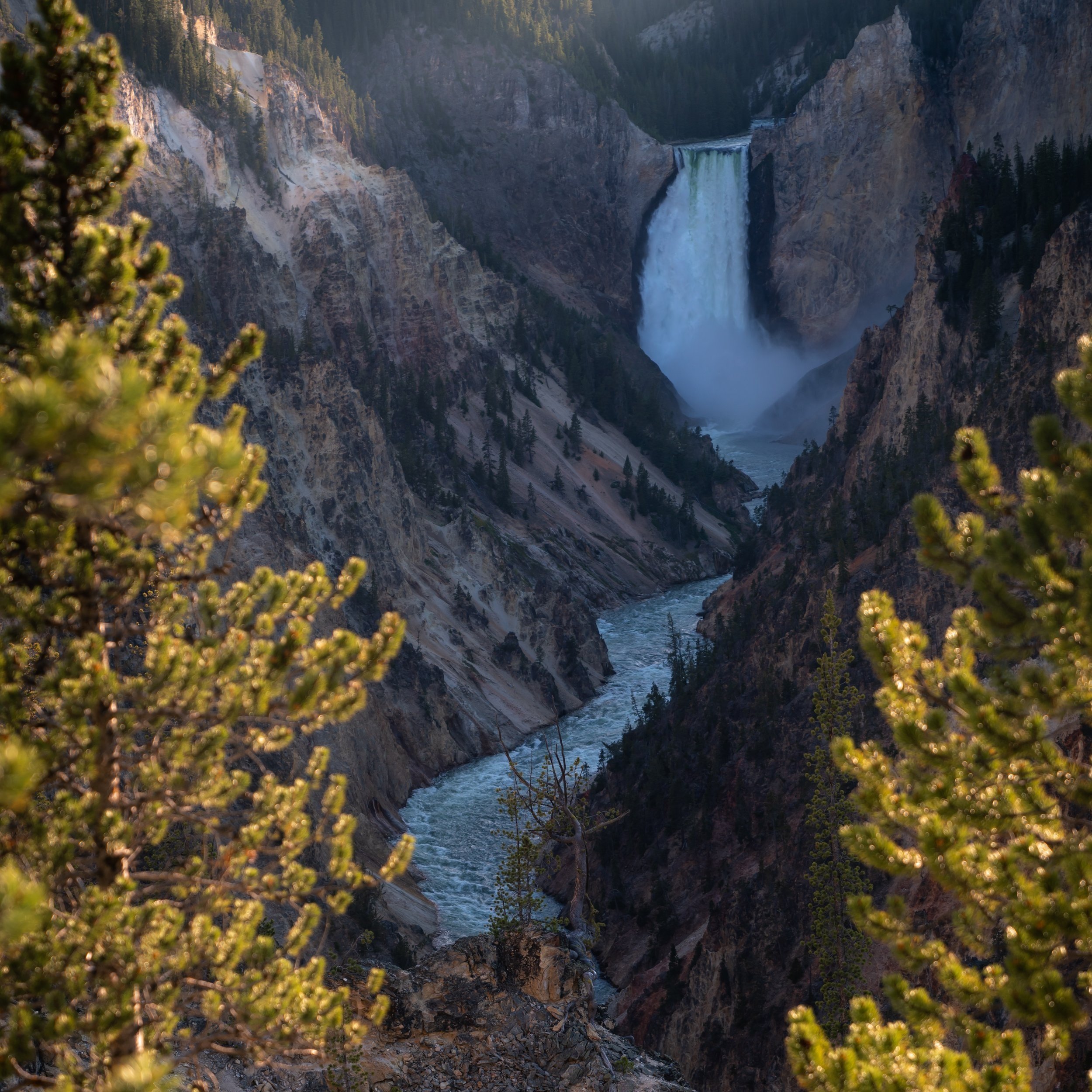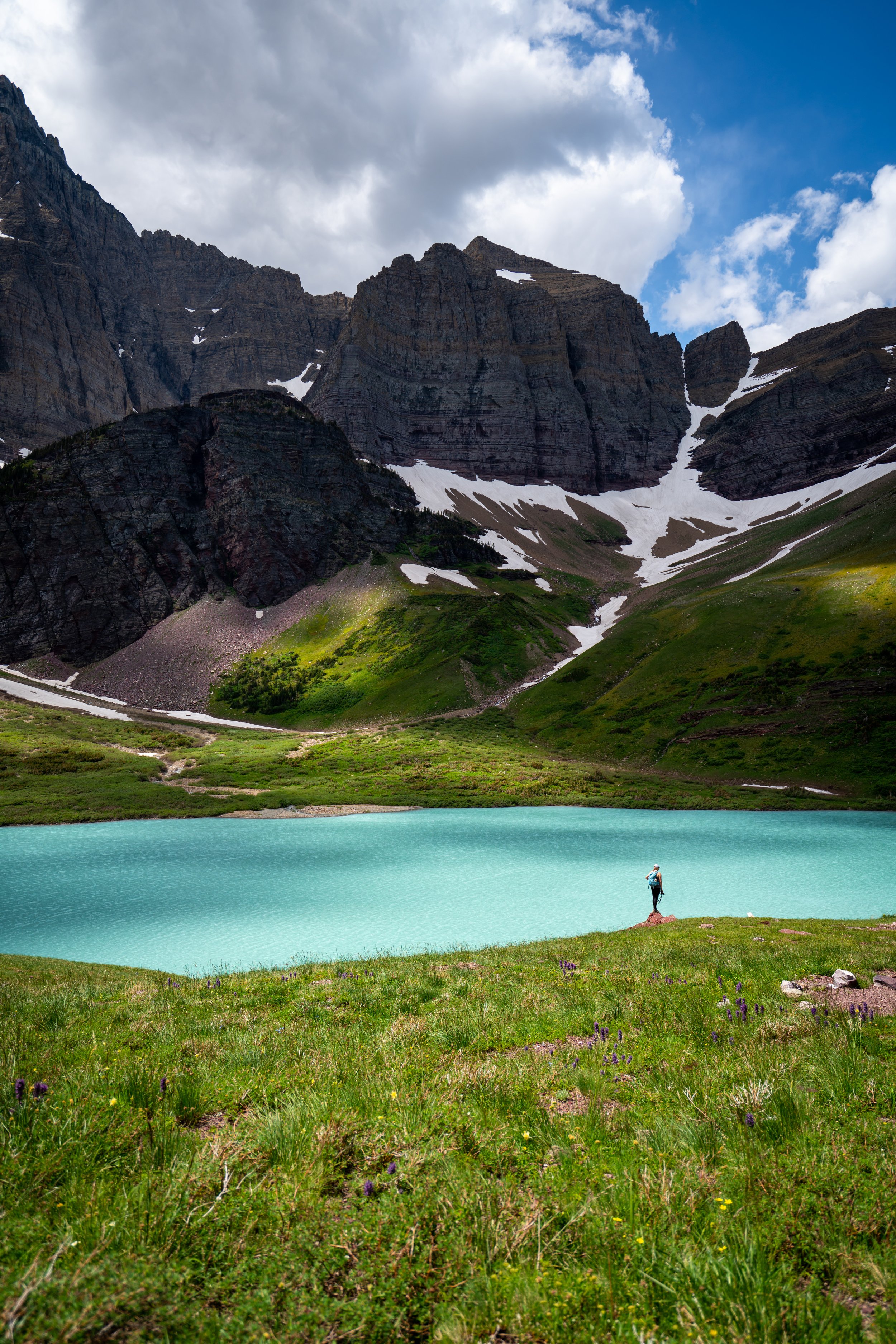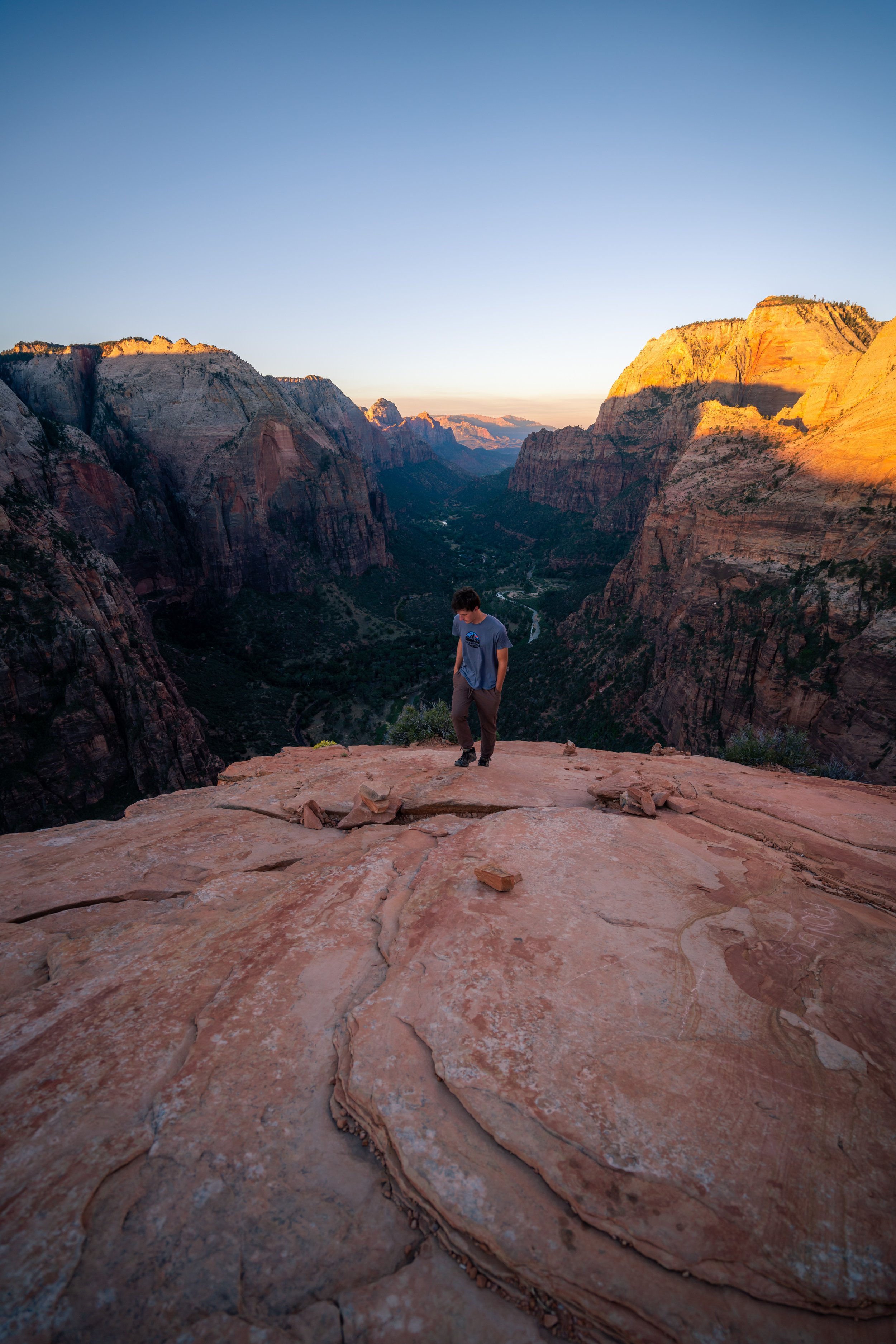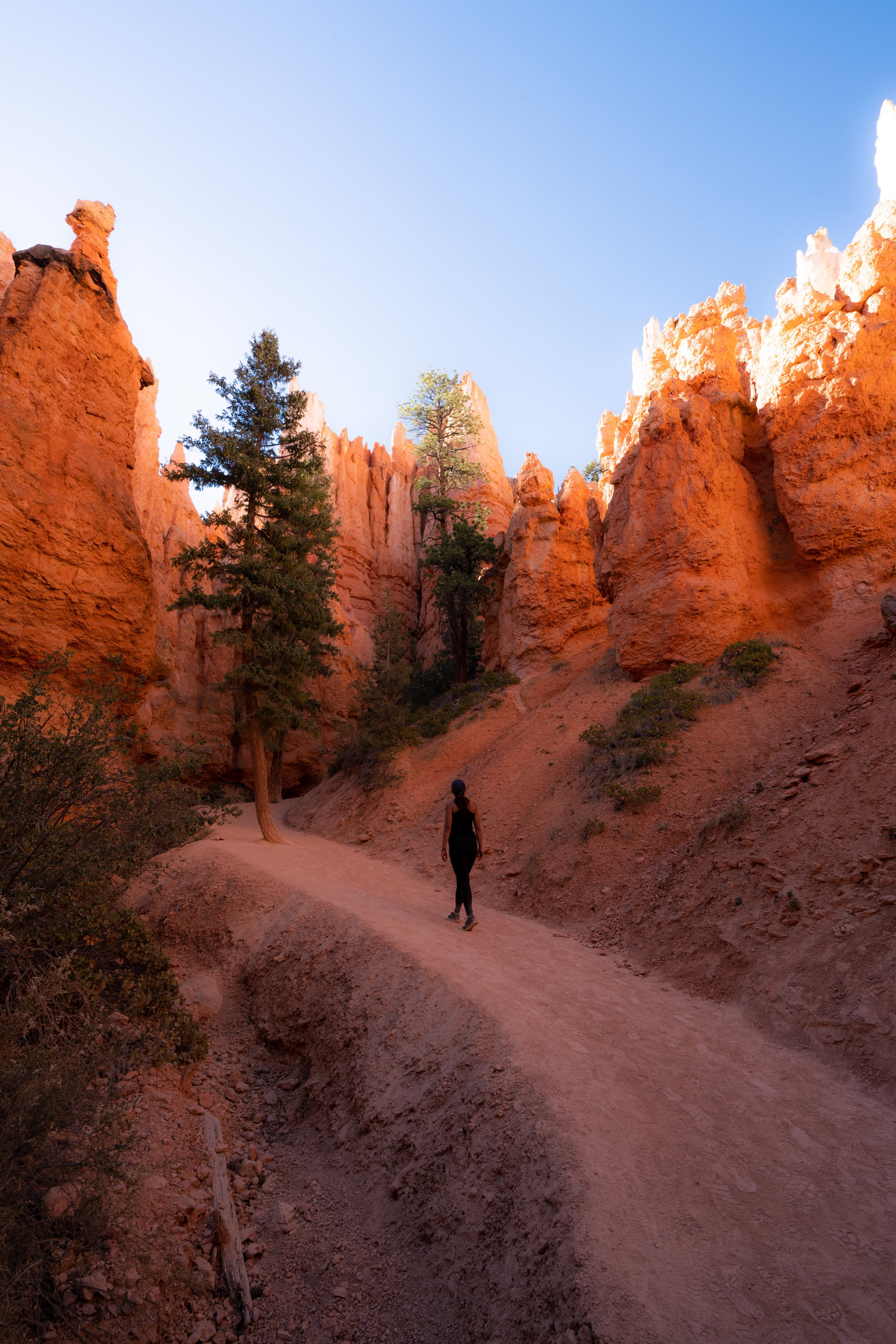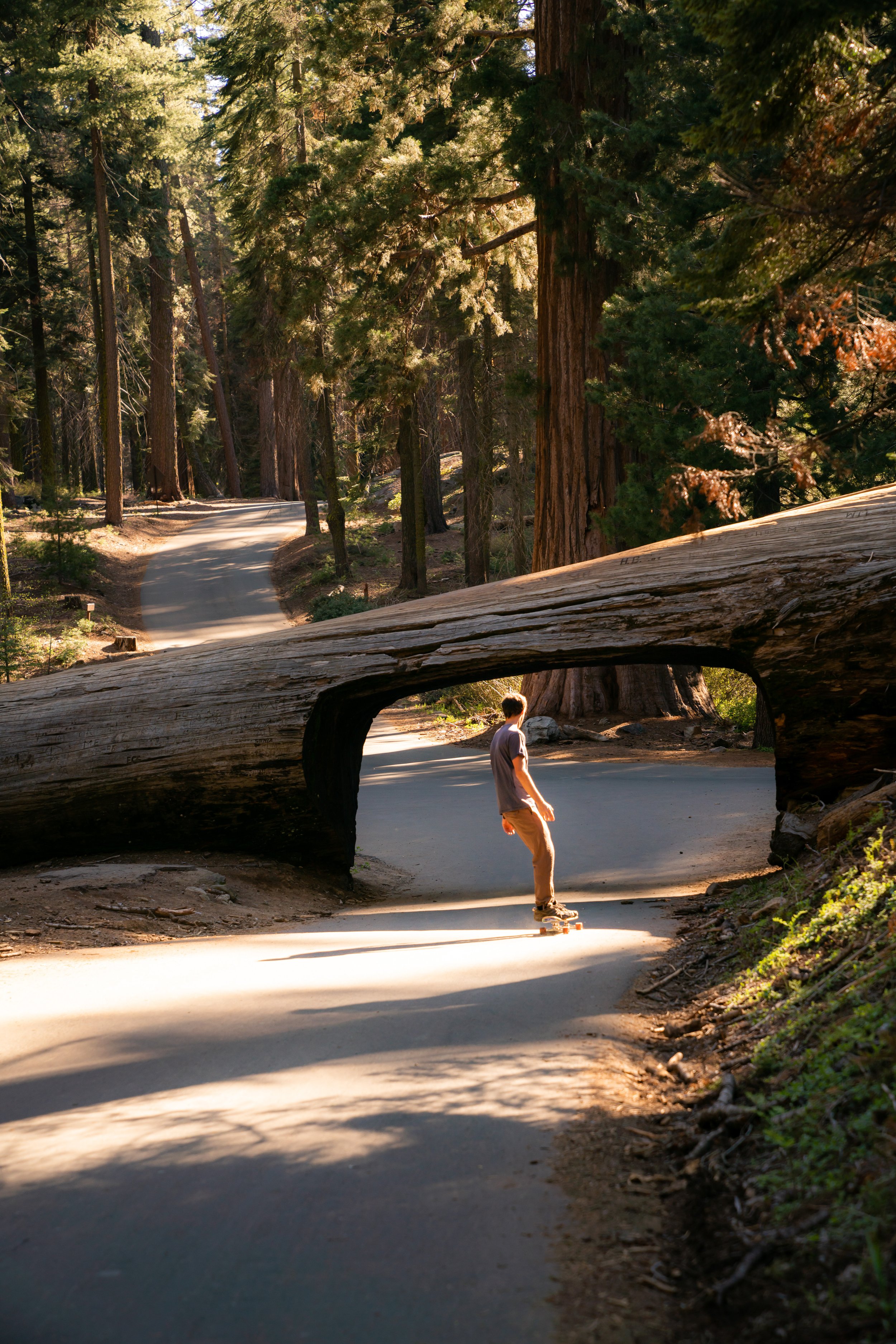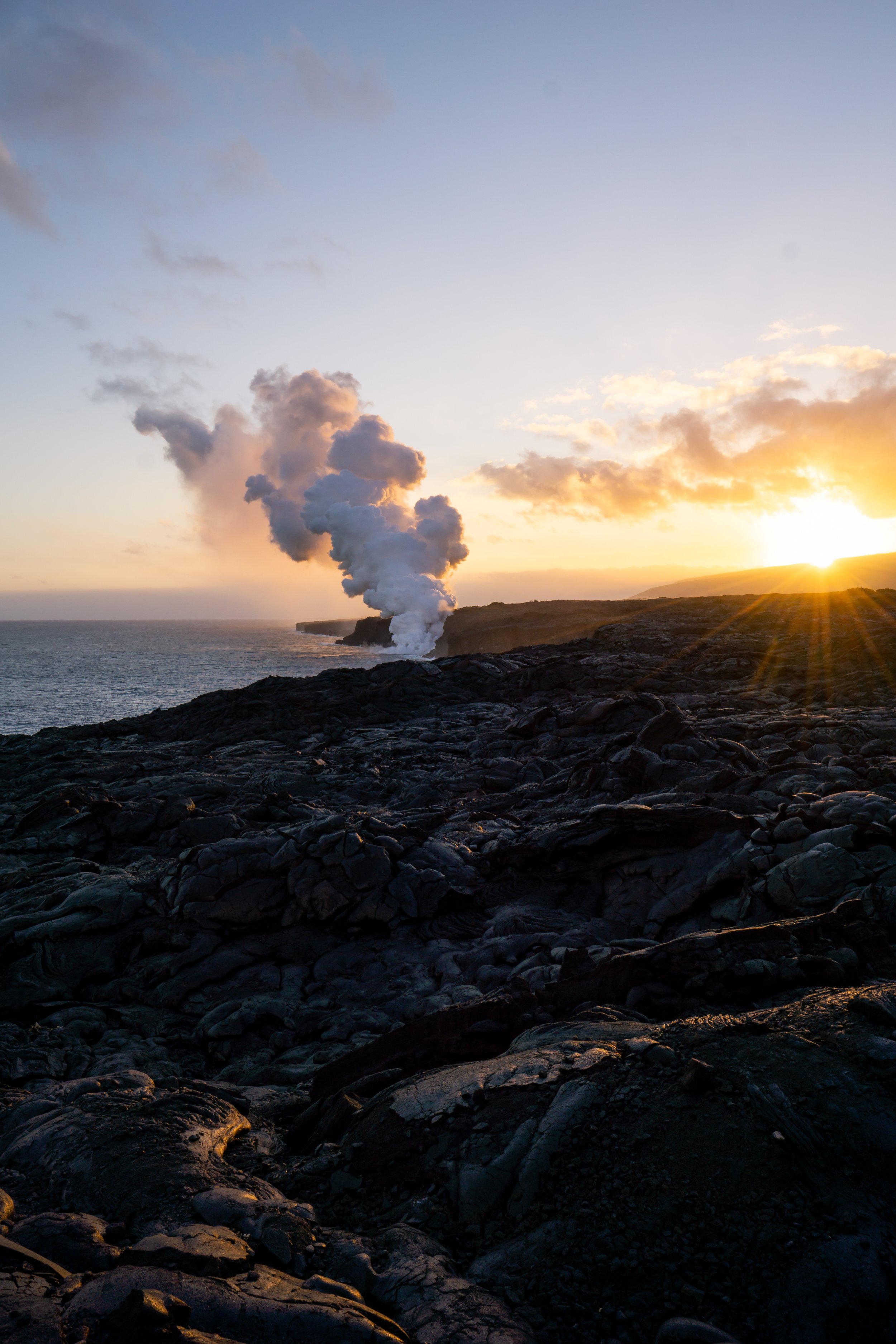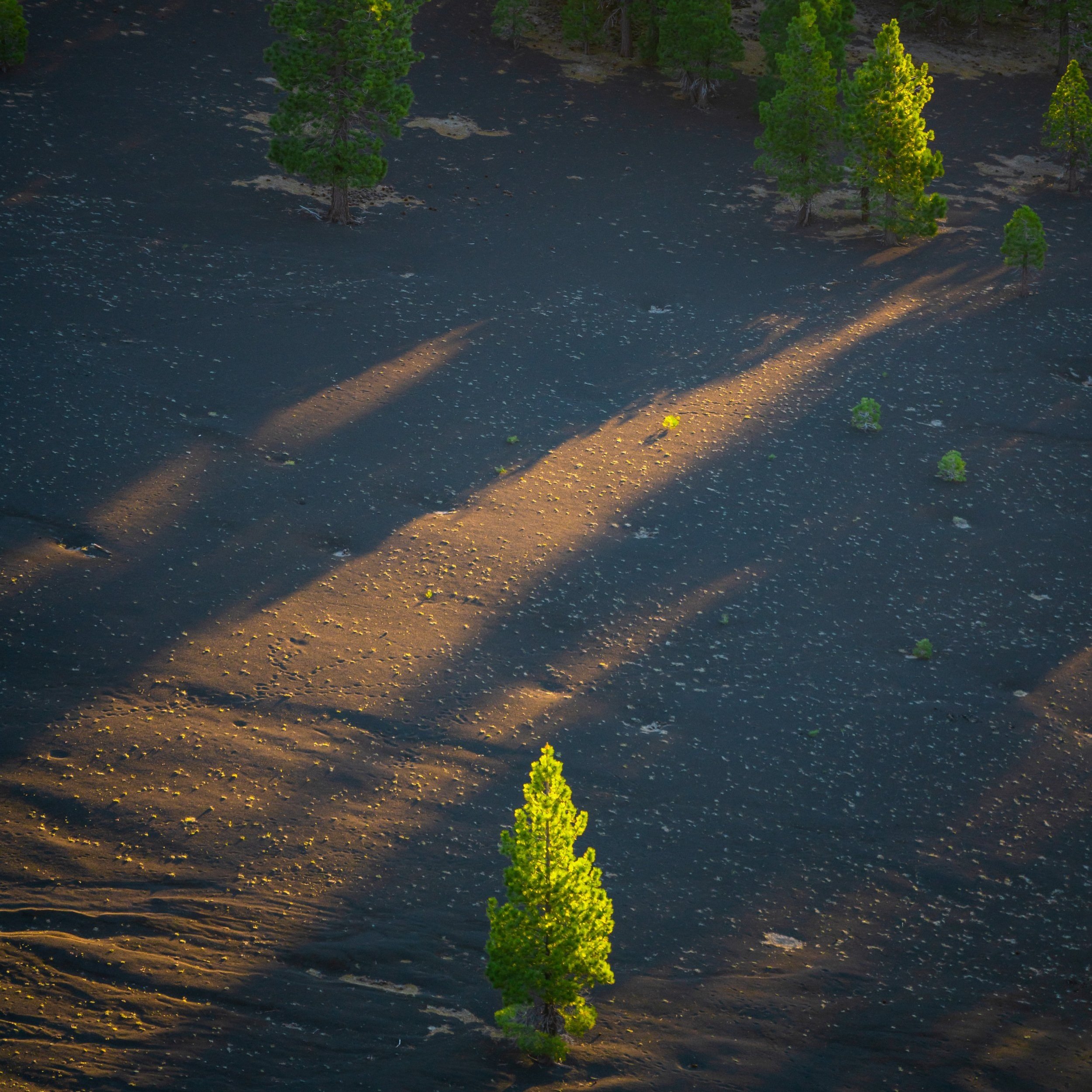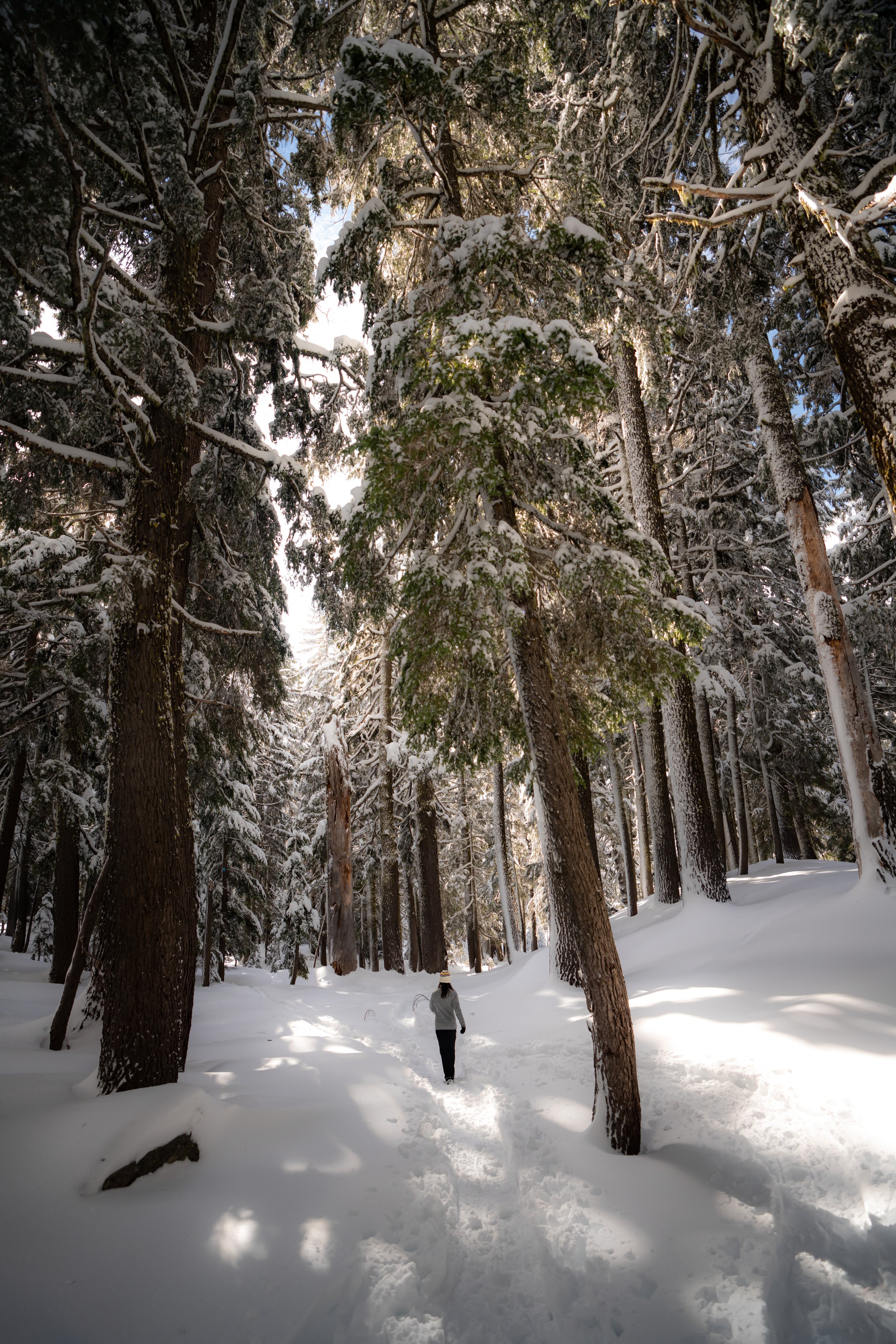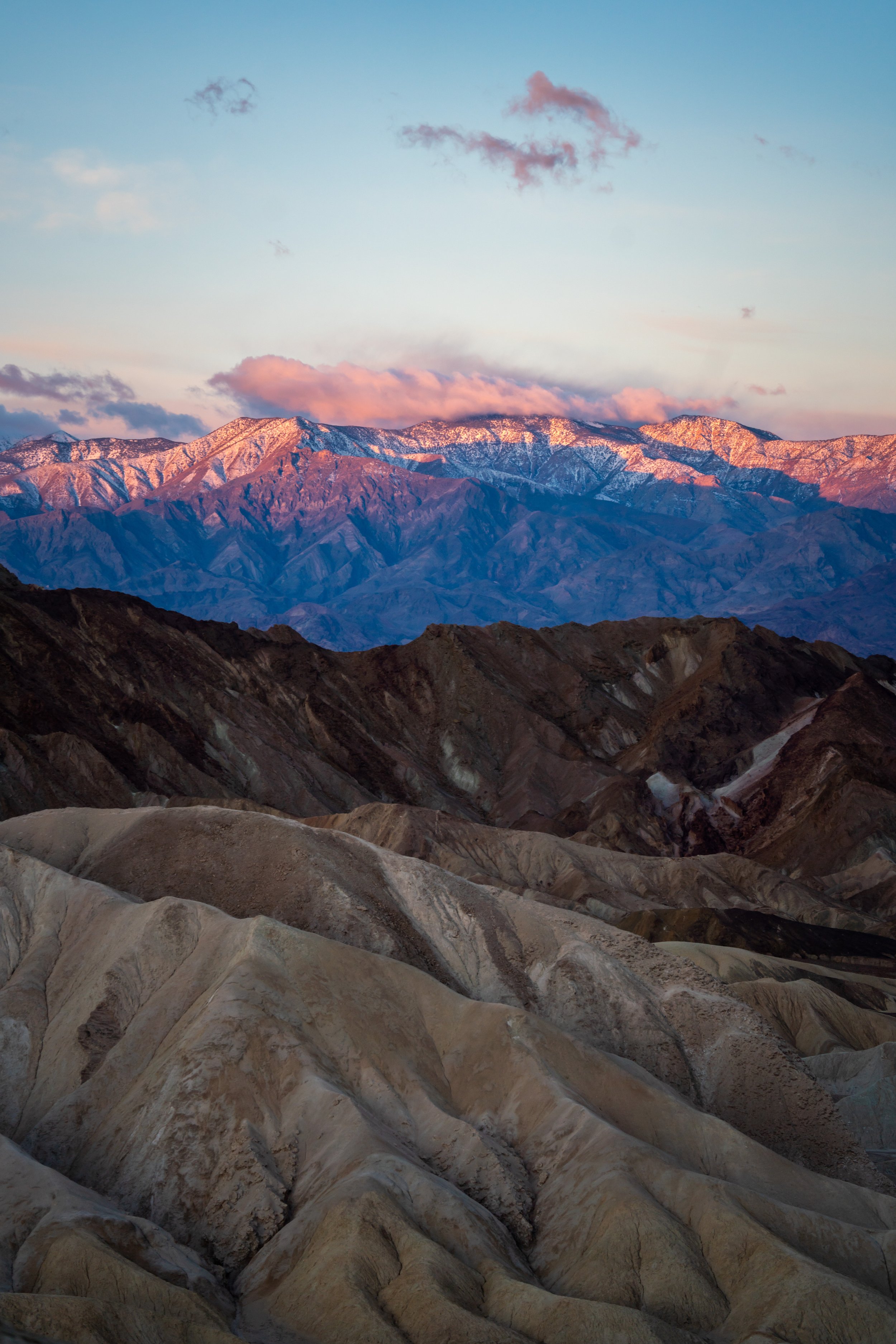Hiking the Tharp’s Log Trail (Log Meadow Loop) in Sequoia National Park
Distance (Full Loop): 2.2 miles / 3.5 km
The Tharp’s Log Trail in Sequoia National Park is one of the best day hikes in Giant Forest to learn a little about the history behind the Giant Sequoias and what the area looked like prior to the establishment of the United States’ second National Park in 1890.
With that in mind, Tharp’s Log is not often hiked as an out-and-back trail via Crescent Meadow; rather, Tharp's Log is often connected with either Crescent Meadow to the west or the Log Meadow Loop to the east in order to explore a different trail on the return hike.
That being said, I personally recommend the Log Meadow Loop over the Crescent Meadow Loop because I think Crescent Meadow makes for a great day hike on its own, as opposed to only hiking half of the loop when returning from Tharp’s Log.
Read My Separate Post: Crescent Meadow Loop Trail
Crescent Meadow Loop Trailhead Parking
Parking for the Tharp’s Log Trail is located at the High Sierra Trailhead, at the very end of Crescent Meadow Road, about 2.6 miles (4.2 km) away from the Giant Forest Museum.
That being said, the High Sierra Trailhead is one of the most popular trailheads in Sequoia National Park, as it is used by both day hikers and overnight backpackers traveling as far as Mt. Whitney in the eastern Sierra.
Therefore, parking at the Giant Forest Museum and riding the free Sequoia shuttle during the busy summer travel season may be the easiest option for reaching places like Tharp’s Log.
Google Maps Directions: High Sierra Trailhead (Crescent Meadow)
Hiking Checklist - Sequoia-Kings Canyon
Here is a complete list of must-have things that you will want for any hike in Sequoia and Kings Canyon National Park.
That being said, bear spray is purposefully excluded from this list because, while the Sierra Nevadas are home to a large black bear population, bear spray is not allowed in either Sequoia or Kings Canyon National Park.
Osprey 3L Water Bladder - The Osprey 3L water bladder is the most universal hiking and backpacking water bladder on the market, and it’s my go-to because of the slide-off seal that allows it to be quickly filled from the top. Additionally, individual parts are easily replaceable, such as the bite valve.
Blister / Heel Protectors - I swear by these cheap, amazing heel protectors to prevent blisters for nearly every kind of hiking and backpacking that I do!
Black Diamond Headlamp - Personally, I recommend the Black Diamond Storm because it is one of the brightest, lightest, and longest-lasting headlamps on the market—and trust me, the weight-to-battery-life ratio really does matter!
Hiking / Trail Running Shoes - Depending on the type of trail, I prefer to use either the Keen Targhee for longer, more rugged hiking or the HOKA Zinal Trail-Running Shoe for lighter, less intense trails. In either case, both have been amazing to me for many years across countless environments, and both can be found in men’s and women’s sizes. - (Men’s Keen / Women’s Keen) (Men’s HOKA / Women’s HOKA)
Waterproof Rain Shell - You never know when it may rain, and I’ve learned over the years that a rain shell is far better than a rain jacket. By this, I mean that it’s best to have something that the water will roll right off of, which is why I recommend the Patagonia Torrentshell 3L available in both men’s and women’s sizes.
High SPF Sunscreen - Packing high-SPF sunscreen is a must for long days outside!
Hiking the Crescent Meadow Loop Trail
The Tharp’s Log Trail begins at the High Sierra Trailhead and follows the High Sierra Trail for the first 0.2 miles (0.3 km) before it branches off toward Crescent Meadow.
Crescent Meadow Loop-High Sierra Junction
This split is where the Crescent Meadow Loop/ Tharp’s Log Trail leaves the High Sierra Trail and others, like the Trail of the Sequoias.
That being said, go left to continue on the Crescent Meadow Loop toward Tharp’s Log.
Read My Separate Post: Trail of the Sequoias
Crescent Meadow
If you’re someone who is interested in having the opportunity to see bears, deer, and other wildlife in Sequoia National Park, I highly recommend hiking this and other trails similar to Crescent Meadow and the Log Meadow Loop around the late evening hours, as shown here.
It’s a little-known secret, but this is when wildlife tends to gravitate toward the meadows within Sequoia and Kings Canyon.
Crescent Meadow Loop-Log Meadow Loop Junction
The next split in the Crescent Meadow Loop Trail is the Log Meadow Loop Trail.
This is the trail I recommend returning on after visiting Tharp’s Log, but in any case, go straight (left) to continue on the paved trail toward Tharp’s Log.
That being said, the entire trail to Tharp’s Log is paved, as it is easily the most popular day hike out of Crescent Meadow.
Crescent Meadow Loop-Tharp’s Log Junction
Shortly after the Log Meadow junction above, the Crescent Meadow Loop splits once again, which is where the Tharp’s Log Trail begins.
At this split, go right to begin the trail to Tharp’s Log, located about 0.5 miles (0.8 km) away from this junction.
If you are interested in learning more about the rest of the Crescent Meadow Loop past the Tharp’s Log junction, I encourage you to check out my separate article linked below.
Read My Separate Post: Crescent Meadow Loop Trail
Tharp’s Log Trail
Once on the Tharp’s Log Trail, there are no more turns until the paved path reaches Tharp’s Log at the far end of Log Meadow.
Tharp’s Log
At the very end of the paved path, the trail reaches Tharp’s Log, a cabin built by Hale Tharp in 1861 to live in during the summer months when he would graze cattle.
Tharp’s Log-Log Meadow Loop Junction
Immediately past Tharp’s Log, the trail splits, with a connector that leads to the west (left) toward Crescent Meadow and the beginning of the Log Meadow Loop Trail, heading east (right).
Here, I personally recommend going right on the Log Meadow Loop, as it is a trail not often hiked by most visitors. Therefore, it’s a great area near the popular Tharp’s Log Trail to look for wildlife along Log Meadow when hiking back.
Read My Separate Post: Crescent Meadow Loop Trail
Log Meadow Loop-Trail of the Sequoias Junction
On the northern end of the trail around Log Meadow, the first split off the trail is nothing more than a short connector with the Trail of the Sequoias.
Here, go straight (right) to continue on the Log Meadow Loop Trail back toward the beginning of the hike.
Read My Separate Post: Trail of the Sequoias
On this hike, there was no shortage of Black Bear scat, but I didn’t have any encounters as I often have in areas like this.
Again, I continued to come across more scat.
That being said, a good way to know you’re looking at black bear scat is by the Arctostaphylos berries that they commonly feed on in the Sequoia-Kings Canyon area.
Log Meadow Loop-High Sierra Junction
On the southern end of the loop, the Log Meadow Trail splits once again with a short connector that leads over to the High Sierra Trail.
This leads to the junction where the High Sierra Trail leaves behind the larger network of trails within Giant Forest and heads into the Sequoia-Kings Canyon Wilderness Area, with the next major stop being Bearpaw Meadow on the Mineral King Loop.
At any rate, go right to continue back toward Crescent Meadow, as the High Sierra Trail is an adventure for another day.
Read My Separate Post: Mineral King Loop Trail
Crescent Meadow Loop-Log Meadow Loop Junction
Finally, the Log Meadow Loop returns back to the paved side of the Crescent Meadow Loop Trail, as previously shown.
Here, go left to return to the High Sierra Trailhead.
Read My Separate Post: Crescent Meadow Loop Trail
I think it’s worth noting that when I was hiking back to the Crescent Meadow Trailhead, I came across a rattlesnake along the side of the paved trail.
I say this to remind you that encounters with Diamondbacks are a reality in Sequoia and Kings Canyon National Park, even in unsuspecting areas like the meadows off the High Sierra Trailhead.
More Sequoia-Kings Canyon Adventures
If you’re interested in reading about some more amazing adventures within Sequoia & Kings Canyon National Park, check out my separate posts below!
Sequoia National Park
Kings Canyon National Park
Best Way to Find Places to Stay!
Wherever I travel, I love to start my search for places to stay on VRBO.
Even if I don’t end up booking through them, I think it’s one of the best ways to see what’s in the area!
Best Way to Book Rental Cars!
I travel quite a bit, and I know firsthand that finding a good rental car deal can be a challenge, but that’s why I recommend comparing all of your options with Discover Cars.
In short, Discover Cars is a well-known, reputable business that allows you to search for the best deal across companies, and they have the best full-refund cancellation policy I’ve ever seen, valid up to 72, or sometimes even 48, hours prior to your reservation!
Book Here: Discover Cars
Safety
Most importantly, Sequoia and Kings Canyon National Park is bear country, and while hiking in black bear territory generally presents less of a risk as opposed to hiking with grizzlies, it‘s important to never get complacent.
That being said, bear spray is not allowed within either Sequoia or Kings Canyon National Park, but storing your food properly, both on your person and in your vehicle, is not only necessary but required. For this reason, always keep your food and trash with you, and follow these basic rules from the NPS with regards to food in your vehicle.
On a different note, there is one venomous snake found in both parks known as the Western Rattlesnake, and surprisingly, I have encountered it many times, both in dry landscapes and in the meadows of both parks.
Finally, during winter months, you may be required to carry tire chains or have them on your vehicle before entering either park. In addition, micro-spikes may be necessary to stay safe on certain trails, such as Little Baldy and many others during the early and late summer season.
As always, find the most up-to-date information and conditions on the official Sequoia-Kings Canyon National Park website.
National Park Service: Sequoia & Kings Canyon National Park
U.S. National Parks Pass
Did you know that the same America the Beautiful Pass that grants access to all 63 U.S. National Parks can be purchased in advance at REI?
Yes, you can save time when you arrive by purchasing your National Park pass, along with your other outdoor gear, at REI before traveling to the park!
More U.S. National Parks
If you’d like to read more about some of my best recommendations when visiting other U.S. National Parks, check out some of my other posts below!
Disclaimer
All information provided on this blog is for informational purposes only and is not intended to be a substitute for information or advice from qualified professionals or managing agencies.
Noah Lang Photography LLC makes no representations or warranties regarding the accuracy or completeness of the information provided here, and readers should use their own discretion, judgement, and seek professional advice where it is appropriate.
Furthermore, Noah Lang Photography LLC shall not be held responsible for any injuries, lost individuals, or legal issues arising from the use of information provided on this website, and if applicable, the above safety disclaimer should be referenced to provide a generic overview of the risks involved.
All said, the content on this blog is for the sole use of Noah Lang Photography LLC, and unauthorized use or reproduction of this content is strictly prohibited.
Disclosure
This post is not sponsored.
However, some of the links in this post are affiliate links, which means that I may earn a small commission if a purchase is made through one of those links. This commission comes at no additional cost to you, and I only recommend products that I personally use and believe will add value to my readers. Thank you for your support, which enables me to continue creating more!
To read the full privacy policy, click here.

About This Blog
Noah Lang Photography, also known as @noahawaii, is 100% reader-supported!
I do not accept guest articles or sponsored content of any kind on my blog, which is why, if you enjoy the outdoor and travel content I create, please consider buying me a coffee!
I appreciate your support, which helps me continue to keep this blog alive!












































